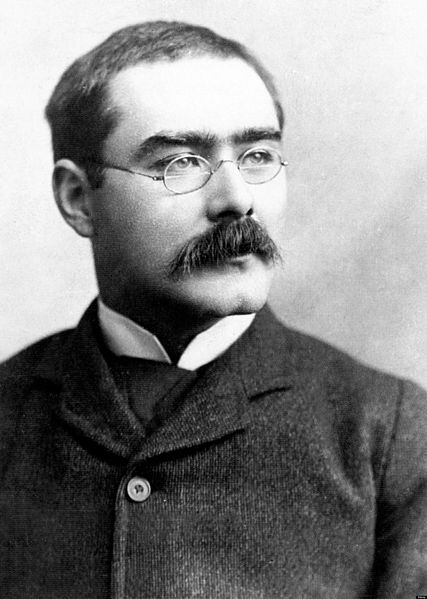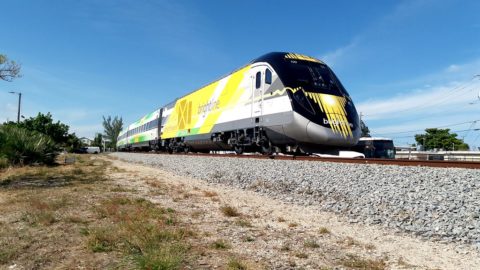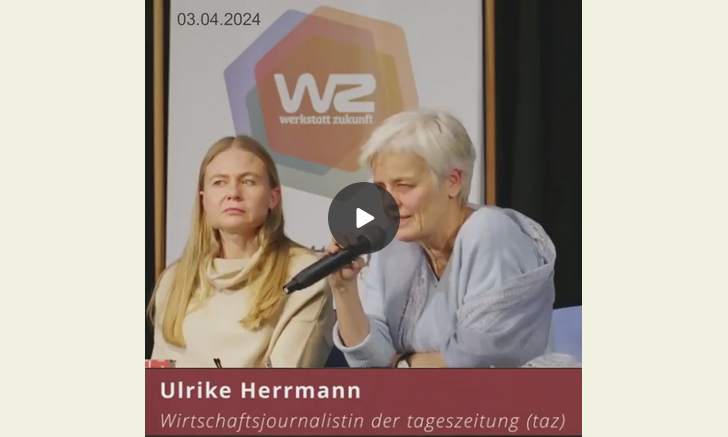Jago Hazzard
Published 27 Oct 2024Mapping the Tube: 1863-2023 at The Map House is a captivating selling exhibition showcasing rare maps and materials spanning over 160 years of London’s transport history. It features the largest collection of Harry Beck manuscripts ever offered for sale, alongside early cartographic works and striking posters by 20th-century artists.
(more…)
February 11, 2025
Mapping the Tube 1863-2023: Treasures of the Tube Map
January 31, 2025
I Spent Over 12 Hours on an Amtrak Train (on purpose)
Not Just Bikes
Published 6 Oct 2024Chapters
0:00 Intro
1:24 Leaving New York
3:04 On the train
4:03 The views
4:38 Freight trains & delays
5:37 The train is so much more comfortable
7:09 The border crossing
8:17 The Canadian side
9:24 Should you take this train?
10:20 Comparisons to Europe & Japan
11:20 We need more high-speed rail
12:02 VIA Rail is bad … and getting worse
12:58 VIA Rail is expensive!
14:11 The new VIA Rail baggage policy
15:49 Better train service is important!
17:14 Concluding thoughts
(more…)
December 30, 2024
RIP Jimmy Carter, “The Great Deregulator”, 1924-2024
ReasonTV
Published 29 Dec 2024Nobel-Winning Economist Vernon Smith says the 39th president radically improved air travel, freight rail, and trucking in ways that still benefit us immensely.
______Jimmy Carter was perhaps the most successful ex-president in American history, winning the Nobel Peace Prize in 2002 for his work promoting human rights and economic and social development.
But his single term as president (1977–1981) is largely remembered as a series of failures and missteps, sometimes literally. Gas lines, a record-high combination of unemployment and inflation on the “misery index”, and Americans being held hostage by Iranian revolutionaries for over a year all fueled the perception that Carter was a weak and ineffective leader. When he collapsed during a six-mile run, it personified for many the exhaustion of the country under his leadership.
But there was at least one way in which Carter excelled as president. He was, in the words of 2002 Nobel–winning economist Vernon Smith, the great deregulator. Carter forced the airline industry, along with interstate trucking and freight rail, to compete for business, with powerful and positive effects that continue to this day.
I talked to Smith about Carter, whom he met at a White House event for American Nobel Prize winners, and what it was like to fly in the days when the government controlled air travel.
December 19, 2024
Learning to Drive a Train with GB Railfreight
Jago Hazzard
Published Aug 23, 2024Training day.
(more…)
December 6, 2024
Victoria’s Canada through the eyes of British visitors
In UnHerd, Michael Ledger-Lomas considers what earlier British visitors to Canada after Confederation wrote about their experiences:

Portrait of Rudyard Kipling from the biography Rudyard Kipling by John Palmer, 1895.
Photo via Wikimedia Commons.
… The re-election of Donald Trump, who has already daydreamed about turning Canada into his 51st state, might even rekindle Tory patriotism. After all, their Victorian ancestors created the dominion of Canada in 1867 to keep British North America from the clutches of the United States.
A longer view shows that Canada has allured but also vexed British observers ever since its creation. The Edwardian era produced an especially rich crop of writings on Canada. In 1887, the year of Queen Victoria’s Golden Jubilee, the first train from Montreal pulled into Vancouver. This completion of the Canadian Pacific Railway (CPR) had persuaded the Crown colony of British Columbia to join in the new federation. In expanding Canada, the CPR also made it easier for British people to see the country. Having crossed from Liverpool to Montreal on a fast liner, they could visit most of its major cities, which were found on or near the railway.
Literary celebrities did so in enviable conditions. The CPR’s bosses loaned the poet Rudyard Kipling his own carriage in 1907, so he could travel in comfort and at his own speed. His impressions, which appeared in newspapers and then as Letters to the Family (1908), make for particularly resonant reading today. Although a man of strong prejudices, he had seen the country up close, rather than merely retweeting allegations about it, and was prepared to be surprised as well as disappointed by it.
Kipling’s contemporaries travelled with heavier and very different ideological baggage than we carry today. It was not wokery that worried them, but irreligion and greed, two poisons that had crept north from America. When the clergyman Hensley Henson steamed into Vancouver, in July 1909, he was horrified to see its beaches plastered with “vulgar advertisements”. The further [East] he travelled, the worse things became. The Anglican clergy were “weaklings” who made no dent on a materialistic society. Winnipeg was given over to “graft”. Young people in Ontario spoke like gum-chewing Yankees. Quebeckers were despoiling their province by setting up hydroelectric dams on its waterfalls.
Kipling did not share Henson’s churchy desire to scold his Canadian hosts. He was a cheerful freethinker who considered materialism a necessary part of nation-building. Canada had “big skies, and the big chances”: he admired its railway workers and lumberjacks for their insouciant and sometimes drunken swagger. Boom towns like Winnipeg excited him: he loved to see office blocks rise and streets flare with natural gas lamps; he lost considerable sums speculating on Vancouver real estate.
What worried him was rather Canada’s fading strategic commitment to the Empire. The modern Right understands Canada as a battleground for the values of “the West”. Kipling, who had married an American and lived for some years in Vermont, naturally believed in and did much to formulate the fervent if vague sense that English-speaking peoples share a civilisation. Yet this did not weaken his overriding concern for the political cohesion of the British Empire. Canada’s failure to join as enthusiastically in Britain’s recent war against the rebellious Dutch Boers of South Africa as he would have liked weighed on him — so much so that he kept calling the prairie the “veldt”. Kipling regarded the scepticism of Liberals and Socialists at home about whether the Empire offered value for money as a “blight”: now this “rot” seemed to be spreading like Bubonic plague, “with every steamer” to Canada.
The way to draw the dominion back to the motherland was to fill it with English settlers who shared his distaste for domestic Socialism. The dilution of English Canada worried Kipling. He allowed the Francophone Catholics of Quebec their differences — he found their basilicas romantic — but the policy of settling the prairies with hardy Slavs from the Habsburg and Russian Empires appalled him. These “beady-eyed, muddy-skinned, aproned women, with handkerchiefs on their heads and Oriental bundles in their hands” could never assimilate to English Canada. Nor did he care that many were fleeing oppression: people who renounce their country have “broken the rules of the game”.
The Halifax Explosion | A Short Documentary | Fascinating Horror
Fascinating Horror
Published Feb 23, 2021“On the 6th of December 1917 two ships collided in the mouth of Halifax Harbour in Nova Scotia, Canada …”
► Suggestions: hello@fascinatinghorror.co.uk
MUSIC:
► “Glass Pond” by Public Memory#Documentary #History #TrueStories
November 11, 2024
The Angel of Victory: Canada’s Processing of The Great War (Vancouver, BC)
Valour Canada
Published Jan 9, 2024This video, by Hania Templeton, discusses the historical context, significance, and current meaning of The Angel of Victory in Vancouver, BC. Hania’s work received first place in Valour Canada’s 2023 History & Heritage Scholarship (VCHHS) contest.
To learn more about this annually awarded #scholarship, including the rules and regulations for eligible entrants, please visit https://valourcanada.ca/education/vch…
November 1, 2024
“[H]er plan will mean the obliteration of your savings, the end of banks and even the destruction of ‘money as we know it'”
It’s astonishing how many highly placed bureaucrats, NGO functionaries, and the very, very wealthy are super gung-ho for reducing the rest of us to the status (and living conditions) of medieval serfs:
This week, VW announced plans to cut tens of thousands of jobs and to close three factories. That is a very big deal, because they have never closed a single German factory before. I try to avoid economic topics, but this story is so much bigger than economics. As Daniel Gräber wrote in Cicero last month, “the VW crisis has become a symbol for the decline of our entire country“.
The Green leftoid establishment are eagerly blaming management for these failures, which is on the one hand not entirely wrong, but on the other hand not nearly an absolution. The German state of Lower Saxony holds a 20% stake in Volkswagen, and so they also manage the company. Recently, in a fit of virtue, they placed a Green politician – Julia Willie Hamburg – on its supervisory board. Hamburg does not even own a car and has used her position to argue that Volkswagen should regard itself not as an automobile manufacturer but as a “mobility services provider” and shift its focus away from “individual transport”.
The absurdly named Julia Willie Hamburg is merely symptomatic of a broader phenomenon. Germany has succumbed to political forces that have nothing but indifference and disdain for the industries that have made us prosperous. Our sitting Economics Minister, Robert Habeck, gave an interview to taz in 2011 in which he said that “fewer cars will not lead to less economic growth, but to new industries”, and attacked “the old growth theory, based on gross domestic product“. And behind Green politicians like Habeck are even more radical forces, like Ulrike Herrmann, the editor of taz, for many years a member of the Green Party and also an open advocate of wide-scale deindustrialisation. Because I am going to quote Herrmann saying some very crazy things, you need to know that she is in no way a fringe figure. She appears regularly on all the respectable evening talkshows and every politically informed person in the Federal Republic knows who she is.
Herrmann has outlined her political views in various books like The End of Capitalism: Why Growth and Climate Protection Are Not Compatible – and How We Will Live in the Future. From these monographs, we learn that Herrmann sees climatism as a means of imposing a centrally planned economy in which we will own nothing and be happy. Happily, Herrmann also talks a lot, and in her various speeches and interviews she states her vision for decarbonising Germany in very radical terms. I am grateful to this twitter user for highlighting typical remarks that Herrmann delivered in April of this year before a sympathetic audience of climate lunatics.
There, Herrmann elaborated on her vision for a future economy in which all major goods would have to be rationed:
Talking about rationing: It’s clear that if we shrink economically, we won’t have to be as poor as the British were in 1939; rather, we’d have to be as rich as the West Germans were in 1978. That is a huge difference, because we can take advantage of all the growth of the post-war period and the entire economic miracle.
The central elements of the economy would have to be rationed. First of all, living space, because cement emits endless amounts of CO2. Actually, new construction would have to be banned outright and living space rationed to 50 square metres per capita. That should actually be enough for everyone. Then meat would have to be rationed, because meat production emits enormous amounts of CO2. You don’t have to become a vegetarian, but you’ll have to eat a lot less meat.
Then train travel has to be rationed. So this idea, which many people also have – “so okay then I don’t have a car but then I always travel on the Intercity Express trains” – that won’t work either, because of course air resistance increases with speed. Yes, it’s all totally insane. Trains won’t be allowed to travel faster than 100 kilometres per hour, but you can still travel around locally quite a lot. This is all in my book, okay? But I didn’t expand on it there because I didn’t want to scare all the readers.
At this point Herrmann begins to cackle manically, ecstatic at the thought that millions of Germans will be stuck riding rationed kilometres on slow local public transit.
October 22, 2024
VIA Rail’s $1B investment somehow ends up making the trains … slower
In the National Post, Chris Selley explains why VIA Rail’s newest locomotives — part of a $1B motive power upgrade program — are making the trains run more slowly in the heaviest-traffic portion of the passenger rail network:

VIA SCV-42 2202 Charger pushing Train 33 through Michael St. in Ottawa over level crossing, 7 March 2023.
Photo by Tiernan Johnson via Wikimedia Commons.
The news this past week for Canada’s long-suffering rail passengers would be funny if it weren’t so utterly pathetic: Government-owned Via Rail’s brand new, nearly $1-billion, much-ballyhooed new Siemens Venture train sets will take longer to navigate the Windsor-Quebec City corridor than their predecessors.
“Via Rail Canada would like to advise its passengers that we are currently experiencing delays on certain trains due to unexpected speed restrictions imposed by CN, the railway infrastructure owner,” a recent email to customers read. “Delays of 30 to 60 minutes are possible on trains travelling on the … corridor.”
The issue concerns signalling at level crossings. CN requires train sets to have a minimum of 32 axles in order to guarantee warning bells and barriers are properly activated as they approach. The Siemens train sets have 24 axles, meaning they have to slow on approach to at least some level crossings — of which there are many hundreds on the corridor — to ensure the signals have indeed activated. These trains were exhaustively tested beforehand on CN rails, which are what Via mainly uses.
The mind boggles as to how this issue could have been missed, and it’s not clear whose fault it is. CN warned Via of the 24-axle issue way back in 2021, according to CN spokesperson Ashley Michnowski, and confirmed the issue once it became official that the Siemens trains wouldn’t meet the 32-axle requirement. Via counters that this all came “without prior notice.”
Either way there’s no excuse. This has been a known issue with these same basic train sets on other North American passenger railways. And maybe the worst part: There’s a workaround technology called a “shunt enhancer” — an alternative way to trip the level-crossing signals remotely — that Siemens actually manufactures. Amtrak announced months ago it was installing them on the same Siemens locomotives Via now uses. Years too late, apparently, Via now says it’s looking at the technology.
Via customers are remarkably forgiving and earnest people, in my experience, but I imagine learning of possible “delays of 30 to 60 minutes” must have set eyes rolling. In my wretched experience in being sentenced to travel Via rail, a 30-minute delay between Ottawa and Toronto counts as a red-letter day. In the week before the new restrictions went into effect on Oct. 11 — just in time for Thanksgiving! — ruinous Via delays included a train that was one hour and 39 minutes late arriving in Toronto from London, which is a two-hour bus ride away. On one Saturday, trains arriving in Toronto from Ottawa and Montreal were on average 71 minutes late.
October 19, 2024
Trope Talk: Train Fights!
Overly Sarcastic Productions
Published Jun 28, 2024Everyone pack your bags, do your hand-stretches and file this one under “trope talks that could easily be bingo cards”! Today let’s talk about that oh-so-spectacular staple of setpieces, the marvelous Train Fight!
(more…)
October 9, 2024
Dangling the old “high speed rail between Toronto and Montreal” proposal again
In what seems like an annual ritual, the attractive-to-many (but economically non-viable) idea of putting in a high speed rail line between Toronto and Montreal is getting another airing:

The closest active model to the proposed VIA “High Frequency Rail” proposal is the Brightline service in Florida.
“BrightLine – The Return of FEC passenger service” by BBT609 is licensed under CC BY 2.0
In 2021, the Government of Canada confirmed its plans to significantly upgrade VIA Rail’s passenger rail service between the Windsor and Quebec City corridor into a high-frequency rail service.
As the name suggests, this new high-frequency rail service would offer significantly higher frequencies and reduce travel times on the route linking Toronto, Ottawa, and Montreal by 25 per cent.
With dedicated passenger rail tracks separate from freight operations, which greatly contribute to current service delays, this new train service would more consistently operate at increased speeds of up to 177 km/h to 200 km/h, and reliability would improve to an on-time performance by over 95 per cent.
This is quite true … the existing rail network between Toronto, Montreal and Ottawa was designed and built to carry freight traffic first and passengers only as a secondary goal — in many cases to attract government subsidies for the construction of the lines. Passenger services are, at best, marginally profitable but generally passenger service is a dead loss for the railways and only maintained thanks to ongoing government subsidies, grants, and tax breaks.
Freight trains — the profitable part of the railway network — have gotten longer and heavier over time as technology has improved (and train crews have gotten smaller, reducing labour costs) and the signal systems are optimized for freight traffic: long, slow-moving trains that take a lot of time and energy to speed up and slow down. Passenger trains travel faster (well, theoretically anyway) and make frequent stops to pick up and drop off passengers … signalling systems (which are critical to safe operations) need to be designed to optimize the usage pattern of the majority of the trains which in practice means freight with some modifications in high-population areas to accommodate passenger traffic.
This high-frequency rail service would use VIA Rail’s new and growing fleet of modern Siemens Venture trains operating on the Windsor-Quebec City corridor.
But as it turns out, the federal government is also contemplating a new service that is even better than high-frequency rail — the potential for a high-speed rail service, which would be the first of its kind in Canada.
Currently, the federal government is engaged in the Request For Proposal (RFP) process for the project. In July 2023, it shortlisted three private consortiums to participate in the RFP’s detailed bidding process, attracting international interest from major investors and some of the world’s largest passenger rail service operators.
This includes the consortium named Cadence, entailing CDPQ Infrastructure, AtkinsRealis (formerly known as SNC-Lavalin), Systra Canada, Keolis Canada, SNCF Voyageurs, and national flag carrier Air Canada.
The inclusion of Air Canada in the consortium is … interesting … as one of the goals of an actual high speed system would be to drain off a proportion of the short-haul passenger traffic that currently goes by air. A cynic might wonder if Air Canada’s interest in the project is to help or hinder.
According to a report in Toronto Star last week, each of the three consortiums was directed to create two detailed proposals, including one concept with trains that travel under 200 km/h and another concept with trains that travel faster than 200 km/h.
High-speed rail is generally defined as a train service that operates at speeds of at least 200 km/h.
It was further stated in the report that the new service could result in travel times of only three hours between Toronto and Montreal, as opposed to the current travel times of over five hours on existing VIA Rail services.
For further comparison, the travel time between Toronto and Montreal on flight services such as Air Canada is about 1.5 hours, which does not include the time spent at airports, while the driving time over this distance of over 1,000 km is about 5.5 hours — similar to VIA Rail’s existing services.
The potential holds for VIA Rail’s new service to operate at speeds over 200 km/h along select segments of the corridor.
The required costs to implement 200km/h speeds will be in eliminating as many grade crossings as possible and reconstructing some tight curves to allow the higher speed trains … and, as mentioned earlier, retrofitting the signal system for the faster passenger trains. Even those measures, which don’t really produce a true “high speed” system will be very expensive.
August 30, 2024
QotD: The stalemate in the trenches, 1914-1918
Last time, we introduced the factors that created the trench stalemate in the First World War and we also laid out why the popular “easy answer” of simply going on the defensive and letting the enemy attack themselves to death was not only not a viable strategy in theory but in fact a strategy which had been tried and had, in the event, failed. But in discussing the problem the trench stalemate created on the Western Front, I made a larger claim: not merely that the problem wasn’t solved but that it was unsolvable, at least within the constraints of the time. This week we’re going to pick up that analysis to begin looking at other options which were candidates for breaking the trench stalemate, from new technologies and machines to new doctrines and tactics. Because it turns out that quite to the contrary of the (sometimes well-earned) dismal reputation of WWI generals as being incurious and uncreative, a great many possible solutions to the trench stalemate were tried. Let’s see how they fared.
Before that, it is worth recapping the core problem of the trench stalemate laid out last time. While the popular conception was that the main problem was machine-gun fire making trench assaults over open ground simply impossible, the actual dynamic was more complex. In particular, it was possible to create the conditions for a successful assault on enemy forward positions – often with a neutral or favorable casualty ratio – through the use of heavy artillery barrages. The trap this created, however, was that the barrages themselves tore up the terrain and infrastructure the army would need to bring up reinforcements to secure, expand and then exploit any initial success. Defenders responded to artillery with defense-in-depth, meaning that while a well-planned assault, preceded by a barrage, might overrun the forward positions, the main battle position was already placed further back and well-prepared to retake the lost ground in counter-attacks. It was simply impossible for the attacker to bring fresh troops (and move up his artillery) over the shattered, broken ground faster than the defender could do the same over intact railroad networks. The more artillery the attacker used to get the advantage in that first attack, the worse the ground his reserves had to move over became as a result of the shelling, but one couldn’t dispense with the barrage because without it, taking that first line was impossible and so the trap was sprung.
(I should note I am using “railroad networks” as a catch-all for a lot of different kinds of communications and logistics networks. The key technologies here are railroads, regular roads (which might speed along either leg infantry, horse-mobile troops and logistics, or trucks), and telegraph lines. That last element is important: the telegraph enabled instant, secure communications in war, an extremely valuable advantage, but required actual physical wires to work. Speed of communication was essential in order for an attack to be supported, so that command could know where reserves were needed or where artillery needed to go. Radio was also an option at this point, but it was very much a new technology and importantly not secure. Transmissions could be encoded (but often weren’t) and radios were expensive, finicky high technology. Telegraphs were older and more reliable technology, but of course after a barrage the attacker would need to be stringing new wire along behind them connecting back to their own telegraph systems in order to keep communications up. A counter-attack, supported by its own barrage, was bound to cut these lines strung over no man’s land, while of course the defender’s lines in their rear remained intact.)
Bret Devereaux, “Collections: No Man’s Land, Part II: Breaking the Stalemate”, A Collection of Unmitigated Pedantry, 2021-09-24.
August 22, 2024
Abandoned Manitoba 2: Port Nelson, Manitoba’s Forgotten Seaport on Hudson Bay
Manitoba Historical Society
Published May 6, 2024The Abandoned Manitoba 2 video series by Graham Street, Shaun Cameron, and Gordon Goldsborough visits ghost towns, vacant buildings, and other historic sites from Manitoba’s past. Join us as we explore back roads to places that tell great stories about how things used to be, and how we have ended up where we are today.
In this video, we tour an abandoned seaport at the mouth of the Nelson River on Hudson Bay. Construction started in 1912 and stopped before the work was completed. It never resumed. Instead, all attention moved to Churchill where, in 1929, a deep water seaport opened. We explore the crumbling remains at Port Nelson, including an artificial island a half mile offshore, a rotting 17-span railway bridge, and a broken dredge.
July 31, 2024
The History of the British Rail Symbol
Jago Hazzard
Published Apr 21, 2024Moving forward or indecision?
QotD: Train nostalgia
Nothing compares to arriving by train; you’re not dropped off in a climate-controlled center on the edge of town, but dropped in the humid middle, surrounded by machinery and steam and shouts and clangs. You don’t slide up the jetway — you schlep yourself along the platform to the stairs, you jostle and maneuver and find your place in the throng; you thread through the station, head outside — and oh, my, GOD, there it is, loud and wide and high and alive, the city.
When you leave you leave with the nudge. Planes waddle to the runway then throw themselves in the air with theatrical fury. Trains nudge you out. You’re sitting in your seat; you’re still. The strange orange subterranean light fills the car; again the shouts, the clangs, the whistles, the whirr of electric carts. The doors huff shut. Conductors walk around listening to crackly voices on the walkie-talkie. You wait. Then the nudge. The train lurches forward, the wheels clank, the rhythm begins, and you’re on your way. In a few minutes you’ll clear the tunnels and see the city from below, indifferent to your departure. Clank clank clank clank clank clank clank clank. On the plane you seem to approach New York like a nest of hornets — you’re wary, circling, then you bore in. When you leave by train you simply move along, move down, move out. Old tunnels, old concrete, rusted remains, barrels, trash, then light. Then the tunnel that takes you away. Standing in Times Square it seems a hard place to leave; it seems like you’d have to fight your way past the lights and noise and commotion and crowds. You’re almost surprised when you leave with such ease, such lack of contention. There should have been a brass band, or a mob.
Manhattan seems like a dream by the time you’re 30 minute down the rails. Maybe that’s why I keep going back. You’re kidding me. This is real? Gowan.
James Lileks, The Bleat, 2005-07-20.







